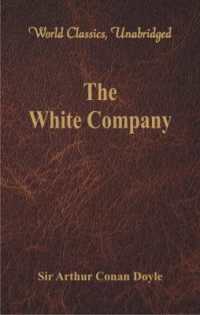Full Description
Logistic Regression Models for Ordinal Response Variables provides applied researchers in the social, educational, and behavioral sciences with an accessible and comprehensive coverage of analyses for ordinal outcomes. The content builds on a review of logistic regression, and extends to details of the cumulative (proportional) odds, continuation ratio, and adjacent category models for ordinal data. Description and examples of partial proportional odds models are also provided. This book is highly readable, with lots of examples and in-depth explanations and interpretations of model characteristics. SPSS and SAS are used for all examples; data and syntax are available from the author's website. The examples are drawn from an educational context, but applications to other fields of inquiry are noted, such as HIV prevention, behavior change, counseling psychology, social psychology, etc.). The level of the book is set for applied researchers who need to quickly understand the use and application of these kinds of ordinal regression models.
Contents
List of Tables and Figures
Series Editor's Introduction
Acknowledgments
1. Introduction
Purpose of This Book
Software and Syntax
Organization of the Chapters
2. Context: Early Childhood Longitudinal Study
Overview of the Early Childhood Longitudinal Study
Practical Relevance of Ordinal Outcomes
Variables in the Models
3. Background: Logistic Regression
Overview of Logistic Regression
Assessing Model Fit
Interpreting the Model
Measures of Association
EXAMPLE 3.1: Logistic Regression
Comparing Results Across Statistical Programs
4. The Cumulative (Proportional) Odds Model for Ordinal Outcomes
Overview of the Cumulative Odds Model
EXAMPLE 4.1: Cumulative Odds Model With a Single Explanatory Variable
EXAMPLE 4.2: Full-Model Analysis of Cumulative Odds
Assumption of Proportional Odds and Linearity in the Logit
Alternatives to the Cumulative Odds Model
EXAMPLE 4.3: Partial Proportional Odds
5. The Continuation Ratio Model
Overview of the Continuation Ratio Model
Link Functions
Probabilities of Interest
Directionality of Responses and Formation of the Continuation Ratios
EXAMPLE 5.1: Continuation Ratio Model With Logit Link and Restructuring the Data
EXAMPLE 5.2: Continuation Ratio Model With Complementary Log-Log Link
Choice of Link and Equivalence of Two Clog-Log Models
Choice of Approach for Continuation Ratio Models
EXAMPLE 5.3: Full-Model Continuation Ratio Analyses for the ECLS-K Data
6. The Adjacent Categories Model
Overview of the Adjacent Categories Model
EXAMPLE 6.1: Gender-Only Model
EXAMPLE 6.2: Adjacent Categories Model With Two Explanatory Variables
EXAMPLE 6.3: Full Adjacent Categories Model Analysis
7. Conclusion
Considerations for Further Study
Notes
Appendix A: Chapter 3
Appendix B: Chapter 4
Appendix C: Chapter 5
Appendix D: Chapter 6
References
Index
About the Author








